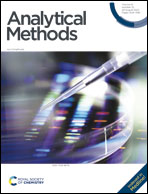Simultaneous detection of positively and negatively charged microparticles by ion trap mass spectrometry
Abstract
This study describes the simultaneous detection of positively and negatively charged microparticles by ion trap mass spectrometry (IT-MS) as a novel analytical measurement technique. The instrument was configured with a feeding capillary for particle introduction, an ion trap, and a charge detector that responds to both ions simultaneously. Positively and negatively charged particles are generated by the triboelectric effect inside the capillary entrance of the instrument. The particles were fed in dry form with a cotton tip to provide the best dispersion. No potential was applied to the lenses on the path of particles and end caps on the ion trap. Particle size calibration has been done using well-defined polystyrene spheres in different sizes. For this study, 2 μm standard polystyrene (PS) spheres were used and checked by different particle sizes. A charge detector detected the ejected positive and negative ions, and the results were evaluated by a program that works under the Labview. The positive and negative ions reached the detector sequentially with respect to their m/z amount. The masses of particles were determined depending on their arrival time at the detector. The IT-MS system and charge detector simultaneously allow positively and negatively charged particles to be detected. This is the first study in the literature that simultaneously shows the trapping and detection of oppositely charged particles.



 Please wait while we load your content...
Please wait while we load your content...